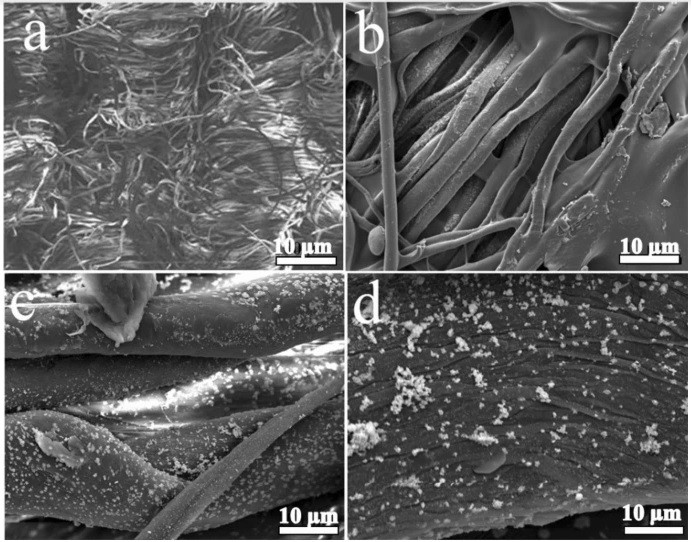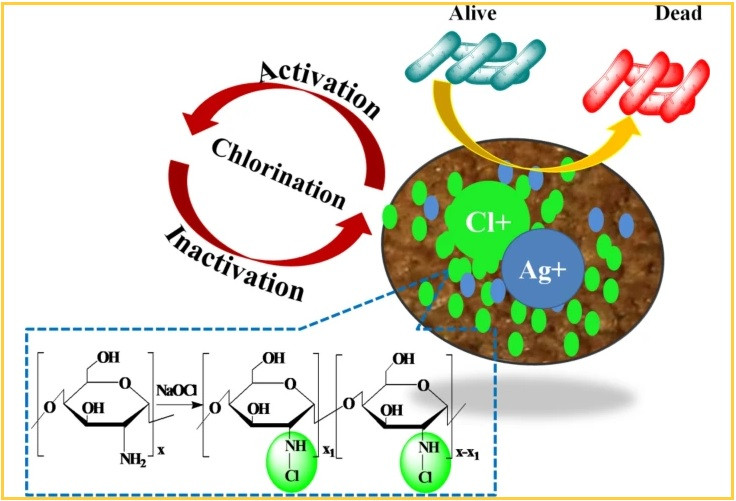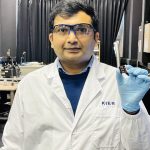A team of Pakistani researchers has developed a low-cost antibacterial fabric that can be used in wound dressing, lab coats, masks and various types of packaging materials.
The team led by Saadat Majeed, Associate Professor-Division of Analytical Chemistry at the Bahauddin Zakariya University in Multan, tested the eco-friendly Chitosan and silver nanoparticles modified fabric for four common types of bacteria.
Bacteria are the most common cause of infectious diseases worldwide.
The fabric was very effective in preventing microbial contamination. The research appeared in Nature, a prestigious science journal.
The research team took the normal fabric and treated it with alkali, which created the active sites in the fabric for modification. Then they dipped the fabric piece in silver nanoparticles and Chitosan – a type of sugar from crabs and lobsters – which coated the cloth with an extra invisible layer.
Read more: NUMS scientist wins global competition on carbon removal from planet
“This coating has active antimicrobial properties and kills the bacterial strains immediately upon contact,” the lead researcher told The Express Tribune, adding that many other methods involve toxic chemicals or expensive equipment, but this method is relatively easy and affordable. “All we need is a beaker and cost-effective material for modifications,” she added.

Chitosan is a biomaterial used for many biomedical applications including antibacterial activities. It has excellent biocompatibility and biodegradability. The positive ionic charges created on the backbone of the chitosan during treatment effectively provide the sites for further modifications and immobilisation.
On the other hand, silver nanoparticles are one of the emerging materials in scientific research and development. These nanomaterials exhibit large surface area and tuneable particle size which render them an effective tool in combating bacteria.
The coating of these two materials in the fabric can allow protection against microbes with minimal cytotoxicity and synergistically.
The piece was observed with different techniques to check how well the coating spread evenly. The fabric was double-checked with electron microscopy and X-ray crystallography.
Also read: Professor Zulfiqar Bhutta ranked among the top 100 medicine scientists globally
Pathogens loaded
To check the antimicrobial properties, the team loaded the fabric with four common types of microbes, namely Micrococcus luteus, Staphylococcus aureus, Enterobacter aerogenes, and E.coli, responsible for pneumonia, infections, hospital contamination and diarrhoea respectively with other diseases.
These microbes also cause serious infections in hospital settings and even turn a wound into an incurable ulcer in case of severe infection.
In laboratory experiments, when compared to normal fabric, the antibacterial patch showed 85 per cent efficacy to kill the bacteria and prevented further spreading it to the other parts as a colony.

The results showed that the fabric treatment method has the potential to be used for hospital fabrics, masks, and food packaging materials. More specific trials are underway.
Speaking to The Express Tribune, Dr Saadat Majeed said that the global pandemic halted many imports including medical supplies so the team started exploring medical fabrics as an emerging field with research on anti-bacterial material, and decided to develop it with an innovative approach locally and the method is now about to be patent.
The fabric is stable as the quality and strength is not compromised during the whole process. The textile does not lose its characteristics and modified contents even after rinsing 10-15 times with water.
Promising shelf life
Storage and shelf life is also an important aspect of the commercialisation of antimicrobial fabric. In this regard, many samples were strictly checked in light and darkness.
One piece of cloth was exposed to UVA light for continues six weeks. The test was necessary to check the efficacy of the antimicrobial procedure.
In another experiment, another cloth was put in the dark in the same observational settings. The fabric retains its maximum antimicrobial properties even after 12 weeks. “The overall treatment and modification of fabric do not affect the essential qualities of fabric,” said Tayyab Raza, senior PhD scholar and co-author.
The fabric treatment method is a hallmark of teamwork of different institutes and scholars from diverse disciplines. It was a joint collaborative effort of Bahauddin Zakariya University, Multan, International Centre for Chemical and Biological Sciences, Karachi University, Nishtar Medical University, Govt. College University Faisalabad and Abasyn University, Islamabad Campus.
Also Read: Pakistani scientist’s promising solar cell technology sets two world records of efficiency
![]()





